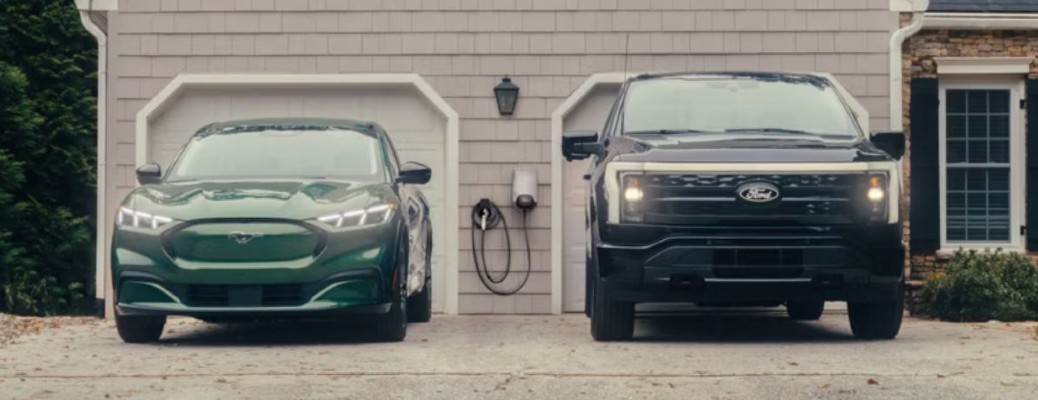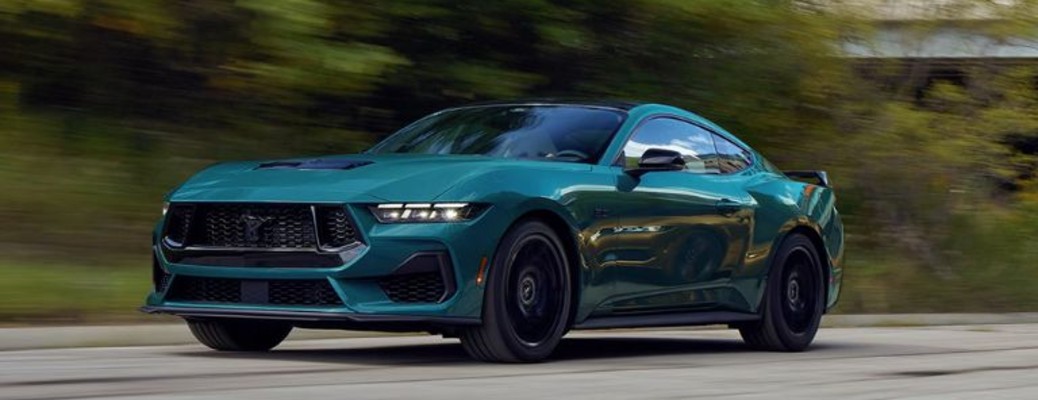Ford vehicles are more aerodynamic thanks to the Rolling Road Wind Tunnel
The all-new Ford Mustang ® Dark Horse ™ was developed using the Rolling Road Wind Tunnel (RRWT), giving it some unique benefits. Read below to learn more about the Dark Horse model and the RRWT with us. Sherwood Ford is always here to share the latest Ford news and to provide the latest Ford models in Sherwood Park, AB.
What is the Rolling Road Wind Tunnel, and what does the RRWT do?
The Rolling Road Wind Tunnel (RRWT) is an innovative technology developed by Ford that combines wind tunnel technology with a vehicle-sized treadmill. It is capable of simulating high speeds, including wind and road surface speeds of up to 200 mph. The RRWT is used to test and design efficient and performance-driven vehicles across the Ford lineup, including electric, hybrid, and gas cars.
Is the RRWT better than other wind tunnels?
Compared to earlier wind tunnel designs, the RRWT provides more accurate data on wind drag and downforce, which are crucial factors for optimizing range, efficiency, and vehicle stability. It allows for in-house testing replicating real-world open-road conditions, reducing design costs and speeding up the design process.
What is vehicle downforce, and why is downforce important?
The Ford Mustang Dark Horse, one of the vehicles tested in the RRWT, focuses on maximizing downforce for track-ready performance. Downforce refers to the vertical force that pushes the car downward, increasing tire grip and improving handling during cornering. Aerodynamicists prioritize downforce over low drag in vehicles like the Mustang Dark Horse.


Ford Mustang Dark Horse – aerodynamic design features
The Dark Horse incorporates various aerodynamic features to enhance downforce. It includes a Gurney flap attached to the rear wing to generate additional downforce. The car also features three vertical plates near each front wheel called strakes, which disrupt airflow and generate more downforce on the vehicle’s underside. Additionally, the Mustang Dark Horse has a redesigned front bumper, a lower valence, a spoiler, unique wheels, and an optimized front design for better airflow and reduced lift.


What are the benefits of a vehicle being aerodynamic?
The benefits of vehicles being aerodynamic are significant. Check out these three main benefits of driving an aerodynamic vehicle.
- Firstly, an aerodynamic design reduces drag, allowing vehicles to cut through the air more easily, resulting in less energy required to maintain speed and improved fuel efficiency.
- Secondly, aerodynamics plays a crucial role in vehicle stability and handling. By generating downforce, vehicles can maintain better traction and grip on the road or track, especially during high-speed cornering. This enhances overall safety and performance.
- Lastly, aerodynamics can contribute to noise reduction. By minimizing turbulence and air disturbances, aerodynamically optimized vehicles experience less wind noise and vibrations, resulting in a quieter and more comfortable driving experience.



